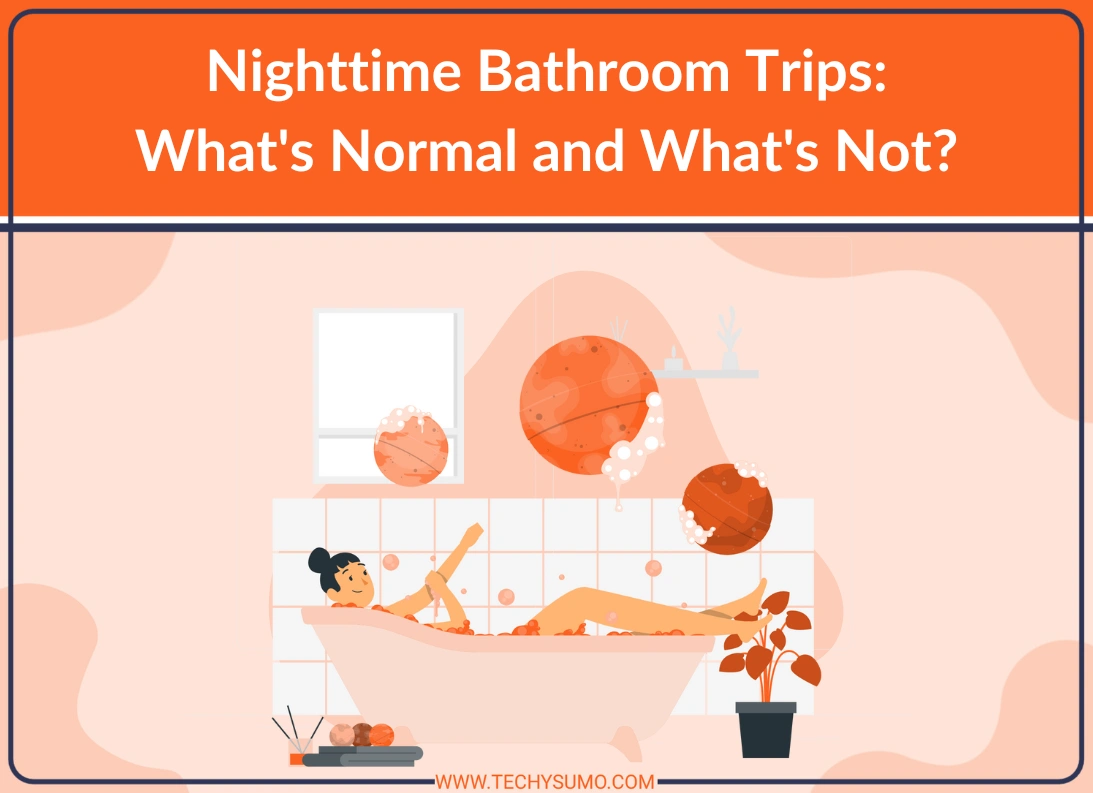Are you waking up multiple times each night to use the bathroom? Getting up once during the night to urinate falls within normal patterns for adults, particularly those over 50. Two or more trips signal nocturia, a condition that disrupts sleep quality and may indicate underlying health issues. The distinction between normal aging-related changes and medical conditions requiring treatment depends on frequency, volume, and associated symptoms.
Nocturia differs from simply drinking too much water before bed. Your kidneys typically produce less urine at night through antidiuretic hormone (ADH) release, allowing uninterrupted sleep. When this mechanism fails or other factors interfere, nighttime bathroom visits increase.
Table of Contents
Defining Normal Nighttime Urination Patterns
Adults under 65 typically experience zero to one nighttime bathroom visit. After 65, one to two visits remain within expected ranges. The medical definition of nocturia requires waking to urinate twice or more nightly for several consecutive nights.
Urine production normally decreases during sleep compared to daytime levels. Bladder capacity ranges from 400-600ml in healthy adults, explaining why most people sleep through the night without interruption.
Normal variations occur based on fluid intake timing, medication schedules, and individual bladder capacity. Drinking large amounts of fluid within two hours of bedtime typically triggers one additional nighttime void. Alcohol and caffeine consumed after 6 PM increase nighttime urine production through their diuretic effects.
Also Read
The quality of sleep interruption matters as much as frequency. Waking naturally to urinate, then returning to sleep easily differs from urgent awakening with difficulty resuming sleep. Urgency, discomfort, or incomplete emptying accompanying nighttime urination suggests underlying pathology rather than normal variation.
Medical Conditions Behind Excessive Nighttime Urination
Benign prostatic hyperplasia (BPH) causes nocturia in men through two mechanisms: bladder outlet obstruction and detrusor overactivity. The enlarged prostate prevents complete bladder emptying, leaving residual urine that reduces functional capacity.
Overactive bladder syndrome affects both genders, causing sudden urges to urinate throughout day and night. The detrusor muscle contracts inappropriately, triggering urgent sensations. If these symptoms persist, consulting a urologist Singapore can help identify the cause and guide appropriate treatment options.
💡 Did You Know?
Your body produces different amounts of ADH (antidiuretic hormone) based on your circadian rhythm. Disruption of this rhythm through shift work or jet lag can temporarily increase nighttime urination until your body readjusts.
Diabetes mellitus increases nighttime urination through osmotic diuresis. When blood glucose levels exceed the kidney’s reabsorption threshold, it pulls water into urine. Diabetic patients may produce significantly more urine daily than normal.
Heart failure leads to nocturia through fluid redistribution. Edema accumulated in legs during daytime returns to circulation when lying flat, increasing kidney filtration. Patients often report producing more urine at night than during the day, reversing normal patterns.
Sleep apnea triggers nocturia through hormonal changes. Repeated breathing interruptions cause pressure changes in the chest, affecting heart function and triggering release of atrial natriuretic peptide. This hormone increases urine production in patients with untreated sleep apnea.
Bladder Diary Assessment
A bladder diary provides objective data about urination patterns over 3-7 consecutive days. Record the time of each void, volume measured using a measuring cup, fluid intake timing and amount, and any associated urgency or leakage.
Normal daytime frequency ranges from 4-7 voids, with volumes between 200-400ml per void. Nighttime production should remain below 33% of total 24-hour volume. Functional bladder capacity, determined by the largest voided volume, should exceed 400ml.
The diary reveals patterns invisible during brief clinical visits. Polyuria (24-hour volume exceeding 2.8 liters) requires different treatment than reduced bladder capacity or nocturnal polyuria. Time intervals between voids help distinguish overactive bladder from normal frequency with high fluid intake.
Lifestyle Modifications That Reduce Nighttime Trips
– Fluid restriction beginning 2-3 hours before bedtime reduces nighttime urine production without causing dehydration. Maintain normal intake during daytime hours, aiming for pale yellow urine color by late afternoon. Shift fluid consumption earlier, completing most of daily intake before 5 PM.
– Compression stockings worn during daytime prevent fluid accumulation in legs. Grade 2 compression (23-32 mmHg) works well. Remove stockings 2-3 hours before bedtime, allowing accumulated fluid to re-enter circulation and undergo filtration before sleep.
– Afternoon naps with leg elevation promote fluid redistribution during daytime. Elevate legs above heart level for 30-45 minutes between 3-5 PM. This position change triggers diuresis while you’re awake rather than disrupting nighttime sleep.
– Dietary modifications reduce bladder irritation and urine production. Limit caffeine to morning hours only, avoiding coffee, tea, and chocolate after noon. Reduce alcohol consumption, particularly beer which combines volume with diuretic effects. Minimize spicy foods, artificial sweeteners, and acidic fruits in evening meals.
– Double voiding before bed ensures complete bladder emptying. Urinate normally, then lean forward and attempt to void again after 30 seconds. This technique reduces residual volume, particularly helpful for men with mild prostatic enlargement.
Medical Treatments for Nocturia
Desmopressin replaces deficient ADH in patients with nocturnal polyuria. The medication reduces urine production for 8-12 hours when taken at bedtime. Starting doses of 0.1mg require titration based on response and serum sodium monitoring. Morning sodium levels must remain above 135 mmol/L to continue treatment safely.
Alpha-blockers improve bladder emptying in men with BPH-related nocturia. Tamsulosin 0.4mg or alfuzosin 10mg taken at bedtime relaxes prostatic smooth muscle, reducing outlet resistance. Improvement typically occurs within 2-4 weeks, with maximum benefit at 12 weeks.
Conclusion
Start with a bladder diary to identify patterns, then implement lifestyle modifications like restricting fluids 2-3 hours before bedtime and wearing compression stockings during the day. Medical evaluation becomes necessary when nighttime urination exceeds twice nightly or includes symptoms like blood in urine or difficulty emptying the bladder.
If you’re experiencing frequent nighttime urination, weak urinary stream, or difficulty emptying your bladder, consult a urologist for proper evaluation and treatment options.






